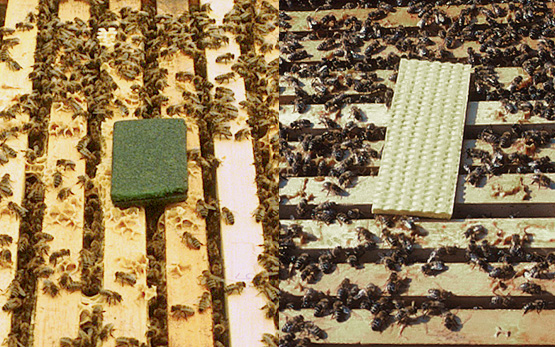Bretscher D., Ammann C., Wüst C., Kupper T., Schenker S., Eggli D., Fasel F., Bock M.
Agriculture.
In: FOEN 2025: Switzerland’s Greenhouse Gas Inventory 1990–2023: National Inventory Report and reporting tables (CRT). Publ. Federal Office for the Environment FOEN. 2025, 262-321.
Wüst-Galley C., Leifeld J.
The distribution and (future) use of Switzerland’s organic soils.
Mires and Peat, 32, 2025, Article 4.
Leifeld J., Paul S. M., Gross-Schmölders M., Wang Y., Wüst-Galley C.
Crediting peatland rewetting for carbon farming: Some considerations amidst optimism.
Mitigation and Adaptation Strategies for Global Change, 30, 2025, Article 13.
Widmer A., Bulas T. M., Metzger K., Guillaume T., Fabian Y., Wüst C., Keller T., Hohl S., Looser F., Füglisthaler D.
Paddy rice production in Switzerland in 2022 and 2023.
Agroscope and Bern University of Applied Sciences. January, 2025, 50 pp.
other Languages:
german | french
Edlinger A., Herzog C., Garland G., Walder F., Banerjee S., Keel S., Mayer J., Phillipot L., Romdhane S., Schiedung M., Schmidt M. W. I., Seitzt B., Wüst C., van der Heijden M.
Compost application enhances soil health and maintains crop yield: Insights from 56 farmer-managed arable fields.
Journal of Sustainable Agriculture and Environment, 4, (1), 2025, Article e70041.
Fabian Y., Hutchings C., Wüst C., Jacot-Ammann K., Walder F., Holzkaemper A.
Alternative landwirtschaftliche Kulturen auf Feuchtackerflächen im Umfeld von Mooren in der Schweiz.
Agroscope Science, 190, 2024.
other Languages:
french
Keel S., Ammann C., Bretscher D., Gross T., Guillaume T., Huguenin-Elie O., Moll J., Nemecek T., Roesch A., Volk M., Wüst C., Leifeld J.
Dauergrünlandböden der Schweiz: Quelle oder Senke von Kohlendioxid?
Agroscope Science, 189, 2024.
Sriskandarajah N., Wüst C., Heller S., Leifeld J., Määttä T., Ouyang Z., Runkle B. R. K., Schiedung M., Schmidt M. W. I., Tumber-Dávila S. J., Malhotra M.
Belowground plant allocation regulates rice methane emissions from degraded peat soils.
Scientific Reports, 14, 2024, 1-12.
Fabian Y., Hutchings C., Wüst C., Jacot-Ammann K., Walder F., Holzkaemper A., Klaus V., van der Meer M., Kay S.
Standortangepasste Nutzungen für vernässende landwirtschaftliche Flächen: Hintergrund und allgemeine Informationen.
Agroscope Transfer, 539, 2024.
other Languages:
french
Widmer A., Tamagni L., Wüst C., Paul S. M., Volpe V., Jocher M., Giger R., Dötterl S., Keller T., Leifeld J.
Mitigating greenhouse gas emissions from managed organic soils in the temperate zone by paddy rice cultivation.
In: EGU General Assembly 2024. 14-19 April, Publ. European Geosciences Union (EGU), Vienna (AT). 2024, 1.
Keel S., Bretscher D., Leifeld J., von Ow A., Wüst C.
Soil carbon sequestration potential bounded by population growth, land availability, food production, and climate change.
Carbon Management, 14, (1), 2023, 1-17.
Wüst C., Heller S., Ammann C., Paul S. M., Doetterl S., Leifeld J.
Methane and nitrous oxide emissions from rice grown on organic soils in the temperate zone.
Agriculture, Ecosystems & Environment, 356, 2023, 1-9.
Calanca P., Wüst C., Giuliani S., Erdin D.
Auswirkungen der Trockenheit auf die Produktivität des Schweizer Grünlands.
Agrarforschung Schweiz, 13, 2022, 135-144.
Leifeld J., Wüst-Galley C.
Kohlenstoffsenke Moorboden: Zustand und Entwicklung.
Hotspot, 43, 2021, 6.
Wüst-Galley C., Keel S., Leifeld J.
Modelling SOC in Switzerland’s mineral agricultural soils using RothC: Sensitivity analysis.
Agroscope Science, 113, 2021.
Wüst-Galley C., Keel S. G., Leifeld J.
A model-based carbon inventory for Switzerland’s mineral agricultural soils using RothC.
Agroscope Science, 105, 2020.
Wüst-Galley C., Volk M., Bassin S.
Interaction of climate change and nitrogen deposition on subalpine pastures.
Journal of Vegetation Science, online, (5 September), 2020, 1-12.
Leifeld J., Klein J. K., Wüst C.
Soil organic matter stoichiometry as indicator for peatland degradation.
Scientific Reports, 10, (6 May), 2020, 1-9.
Wüst-Galley C., Grünig A., Leifeld J.
Land use-driven historical soil carbon losses in Swiss peatlands.
Landscape Ecology, online, (7 December), 2019, 1-15.
Leifeld J., Wüst C., Page S.
Intact and managed peatland soils as a source and sink of GHGs from 1850 to 2100.
Nature Climate Change, 9, 2019, 945-949.







